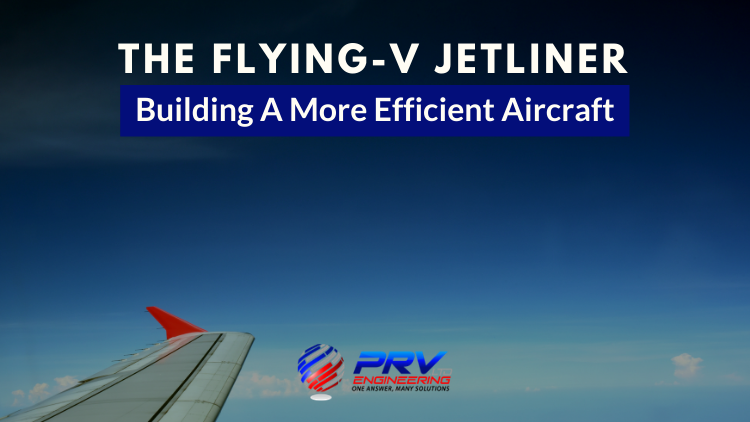
Earlier this year TU Delft successfully launched a scale model of its Flying V jetliner. This new future-ready aeroplane is the epitome of next-gen aerospace engineering showing better fuel efficiency and an interesting design.
Aerospace Engineering At Its Best
Under project leader Dr Roelof Vos, a team of researchers and engineers developed a scale model of the Flying V jetliner. Weighing 22.5 kg and measuring 3 m wide, they launched the scale model for flight tests to a well-guarded airbase in Germany. Here, they worked with a team from Airbus to test the take-off and fly several test manoeuvres and approaches and landing once the batteries were nearly depleted.
Whilst they deemed the trial flight a success, testing new technology is never an easy process. Dr Vos and this team had a challenging build-up where they had to change the aircraft’s centre of gravity and fix the antenna to improve telemetry. Another design issue came to light as the flight showed the aircraft had too much ‘Dutch roll’ which resulted in a slightly rougher landing than anticipated.
Recommended: ‘Celebrating The UKs Aerospace Sector’
Flight Test Conclusion
Indeed, the trial run was successful as it easily performed rotation on take-off at 50 mph (80 km/h). The plane’s thrust was also good and flight speeds and angles were as predicted. However, it remains uncertain how the real jetliner would perform in an actual flight scenario.
Dr Vos stated said: “One of our worries was that the aircraft might have some difficulty lifting-off since previous calculations had shown that ‘rotation’ could be an issue. The team optimised the scaled flight model to prevent the issue but the proof of the pudding is in the eating. You need to fly to know for sure.”
The team must now use the data from the flight to create an aerodynamic (software) model of the aircraft. This will enable them to programme it for use in a flight simulator when conducting future research while improving the flight characteristics.
Designing The Flying-V Jetliner
The Flying-V jetliner is a prime example of how far we’ve come in the world of aerospace engineering. It was specifically designed as a highly energy-efficient long-distance aeroplane with some interesting design concept.
They’ve integrated the passenger cabin, the cargo hold and the fuel tanks in the wings which creates the impressive V-shape with some clear benefits. According to computer calculations, the Flying V Jetliner consumes 20% less fuel than most modern, advanced aircraft. This is a direct result of the improved aerodynamic shape and reduced weight.
The scale model took about 1.5 years to create from viable concept to maiden flight. They built the scale model in-house with assistance from composites experts of the university. The complexity of the design meant they had to custom make some parts, particularly some of the metal components on the landing gear.
Partnering With Aerospace Engineering Giants
Credit also has to go to KLM who has been a partner in the project since 2019. Thanks to their support, the project team has been able to build this scale model. First presented at the 100th anniversary of KLM in October 2019, the project now involved several business partners, including Airbus.
The partners are working together to fine-tune the concept aircraft by providing this aerospace engineering marvel with sustainable propulsion. It’s an exciting prospect as they’ve designed this aircraft to be better suited for carrying liquid hydrogen instead of kerosene.
In terms of the Flying-V team, the Technical Project Leader was Dr Roelof Vos joined by Assistant Professor of Flight Performance and Propulsion, chief engineer Malcolm Brown. The team also consisted of composites expert Frank van Wissen, electronics expert Alberto Ruiz Garcia, CAD designer Daniel Atherstone and two master’s students. PhD student Nando van Arnhem is also a certified drone pilot.
PRV And Aerospace Engineering
Aerospace engineering relies heavily on advanced machinery and precision as the sector has stringent quality controls. Within industries like aerospace and defence, components must be reliable, on time and meet extremely accurate specifications.
Parts and components for aerospace engineering need careful planning and manufacturing. Some of these include fastenings, landing gear and hydraulics, metalwork, fabric interiors, polymers and pressurised systems among many others.
At PRV Engineering, we specialise in several industries including aerospace, defence, oil and energy, construction and rail. Get in touch with our team of experts if you need help fabricating a simple or complex product or if you have any questions about our wide range of products and services.


 Mail:
Mail: 



